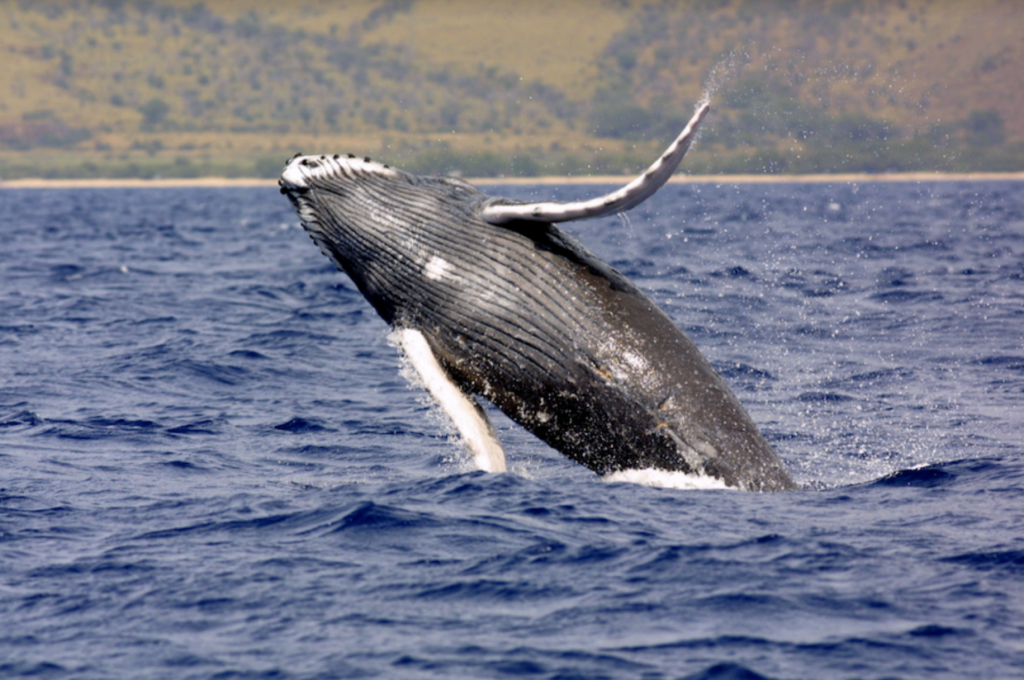Boaters urged to slow down, steer clear of whales in Hawaiʻi waters

With increased whale activity around the islands, NOAA’s Hawaiian Islands Humpback Whale National Marine Sanctuary and state managers remind boaters to be on the lookout for humpback whales and their calves.
“Striking a whale at any speed could prove disastrous for both people and the whale,” Sanctuary officials said in a news release.
The HIHWNMS reports that humpback whales are currently very active in the sanctuary.
“An adult humpback whale can weigh around 45 tons. Striking one of these whales, even at slow speed, would be like striking a slow-moving freight train with your car. Fiberglass, wood, and even metal boat hulls are not designed for such impact. They could shatter or buckle and subject the occupants to the high risk of blunt force trauma and drowning,” according to the Sanctuary.
HIHWNMS reports that there is a common misperception that whales have such excellent natural sonar that they always avoid boats and people on the water. “This is not true. Whales regularly surface under and in front of moving boats, causing damage to vessels, occupants, and the whales themselves. Never assume that a whale can or will avoid you,” according to the news release.
“Enjoy whales from a distance. Please respect these incredible animals and their natural behaviors. Give them plenty of room to move through the area,” said Kim Hum, superintendent of Hawaiian Islands Humpback Whale National Marine Sanctuary. “The last thing anyone wants is an impact or near-impact with a whale, or worse, an overturned boat and someone injured from getting too close.”

Whales are protected from disturbance or injury by federal laws – the Marine Mammal Protection Act and the National Marine Sanctuaries Act – and by state regulations. Any action by an individual that causes the whale to change its behavior, regardless of the person’s intent or distance from the whale, constitutes “harassment” under federal law, subjecting the individual to potential federal fines and penalties.
Boaters should not cross in front of whales, pursue them from behind, or surround whales. Never separate a mother and calf, or purposefully place a vessel in the path of an animal. This is called “leapfrogging” and is illegal.
If approached by a curious whale, a vessel’s captain “should disengage the drive system and drift.” The HIHWNMS advises that when it is safe to do so and the whale has moved away, slowly re-engage and move the vessel away.
During whale season, especially in water depths of 100 fathoms/600 feet or less, boaters are asked to maintain a speed of 15 knots or less (or minimal planing speed) to minimize the risk of striking a whale. When directly approaching a whale to view it, or departing from viewing, speed should be reduced to six knots or less within 400 yards.
Boaters are reminded that in Hawaiʻi waters it is illegal to approach a humpback whale closer than 100 yards by any means by sea or drone and closer than 1,000 feet by aircraft.
Revised recommendations for best boating practices around whales, developed jointly by the sanctuary, the State of Hawaiʻi, and Pacific Whale Foundation, can be found at: https://dlnr.hawaii.gov/dobor/boating-with-whales/
If you see an injured or entangled marine mammal, keep a safe and legal distance and call the statewide NOAA Marine Wildlife Hotline at 888-256-9840 or the US Coast Guard on VHF channel 16 immediately.
Hawaiian Islands Humpback Whale National Marine Sanctuary is an important whale habitat, and the only place in the US where humpback whales mate, calve, and nurse their young.
Designated in 1992, Hawaiian Islands Humpback Whale National Marine Sanctuary works to protect humpback whales and their habitat through research, education, conservation, and stewardship. The sanctuary is administered through a partnership of NOAA’s Office of National Marine Sanctuaries and the State of Hawai‘i Division of Aquatic Resources.










